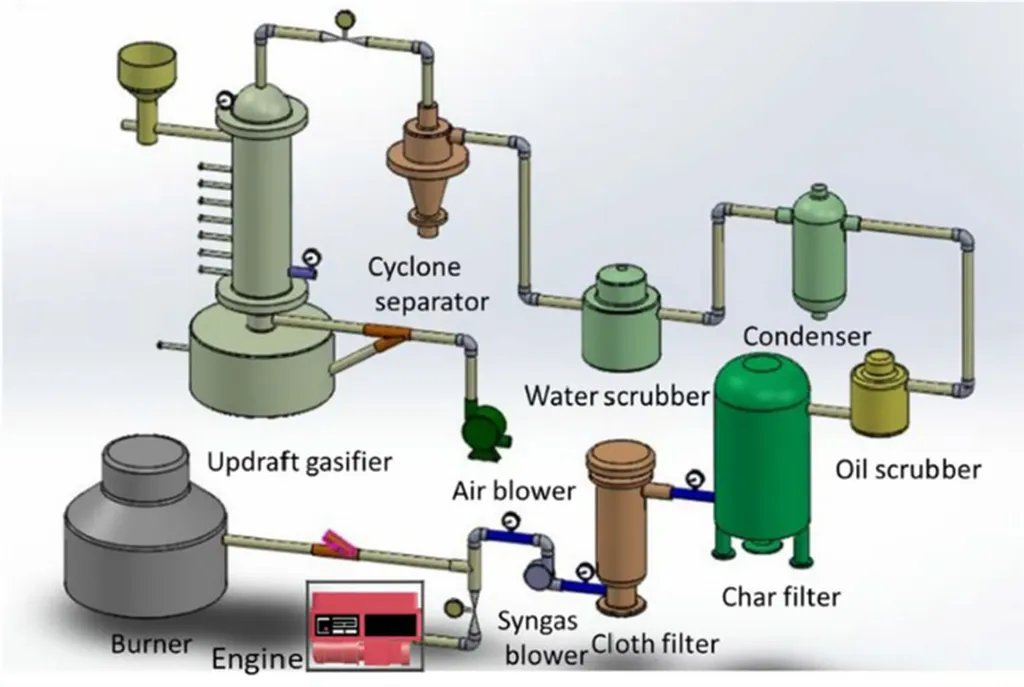In a significant stride towards cleaner and more sustainable energy solutions, researchers have compared the performance of biomass-derived syngas with conventional fuels like gasoline and LPG in a spark-ignition generator. The study, led by Fredy Surahmanto from the Department of Mechanical Engineering Education at Yogyakarta State University, Indonesia, and published in the journal “Hasil dalam Teknik (Results in Engineering),” sheds light on the potential of syngas as a viable alternative for decentralized power generation.
The research team investigated three types of syngas—A, B, and C—each with varying compositions of methane, hydrogen, carbon monoxide, carbon dioxide, and nitrogen. These syngases were derived from biomass gasification, a process that converts organic materials into syngas, a mixture of gases that can be used as a fuel. The team then compared these syngases with gasoline and LPG in terms of engine performance and emissions under different electrical loads.
Syngas C, with the highest lower heating value among the three, emerged as the top performer. “Syngas C demonstrated superior performance, achieving up to 14.54% efficiency at 400 W,” Surahmanto noted. It also exhibited lower emissions of carbon monoxide (CO) and hydrocarbons (HC), making it a cleaner alternative. Syngas B, on the other hand, performed better at lighter loads due to its high hydrogen content, but its efficiency declined as the load increased. Syngas A, however, recorded the poorest performance and highest emissions among the syngases tested.
When compared to gasoline and LPG, the syngases showed promising results. Despite their lower energy density, syngas fuels, particularly Syngas C, offered a cleaner emission profile and adequate efficiency. Gasoline and LPG exhibited higher CO and HC emissions, with LPG reaching up to 443 ppm of HC at 0 W load.
The study’s findings have significant implications for the energy sector, particularly in the realm of decentralized power generation. As the world grapples with the challenges of climate change and the need for sustainable energy solutions, biomass-derived syngas presents a compelling alternative. Its potential for low-to-medium load power generation, coupled with its cleaner emission profile, could make it a valuable player in the future energy mix.
“This research opens up new avenues for exploring the use of biomass-derived syngas in power generation,” Surahmanto said. “It’s a step towards a more sustainable and cleaner energy future.”
As the energy sector continues to evolve, the insights from this study could shape the development of more efficient and environmentally friendly power generation technologies. The journey towards a sustainable energy future is complex and multifaceted, but studies like this one bring us one step closer to achieving that goal.

